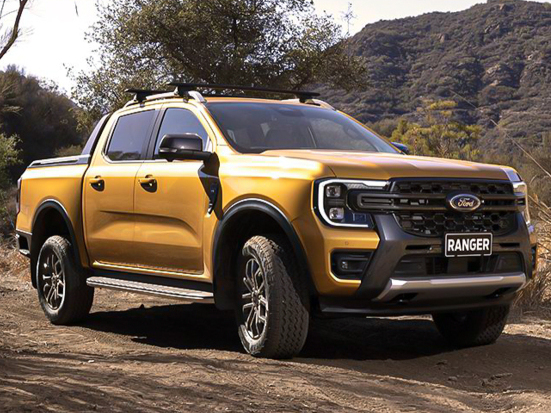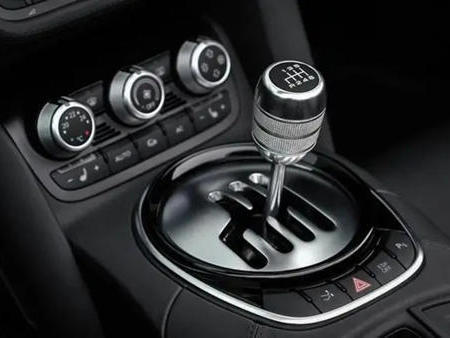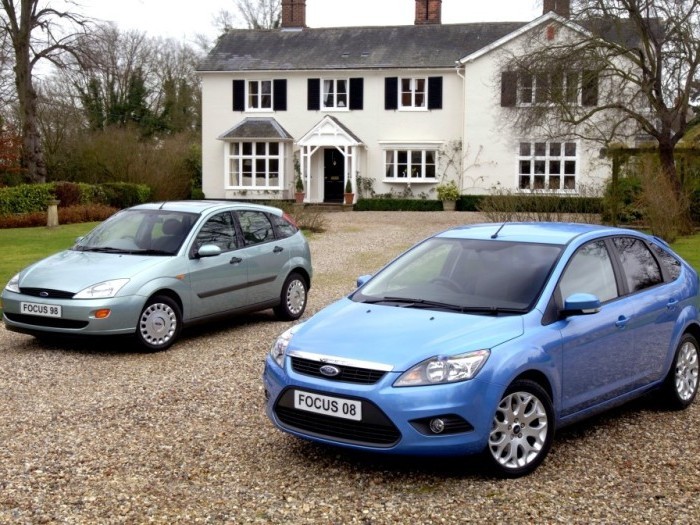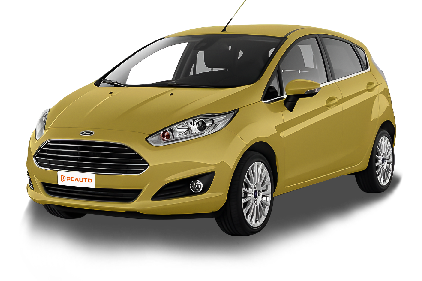Q
Are Ford Fiestas durable?
The Ford Fiesta is well - received by many consumers in the Malaysian market for its economic practicality and driving flexibility. Its durability varies depending on the specific vehicle condition and maintenance habits.
Technically, the 1.5L Ti - VCT naturally aspirated engine in the Fiesta has a relatively simple structure and a low failure rate, making it suitable for urban commuting. However, for those models equipped with the PowerShift dual - clutch transmission, it is recommended to regularly check the status of the clutch pack and transmission fluid to ensure long - term stability.
The high - strength steel used in the car body and the anti - rust process can adapt to the tropical climate in Malaysia. Nevertheless, it is advisable for owners in coastal areas to strengthen the anti - rust care of the chassis.
It's worth noting that Japanese models in the same class, such as the Honda Jazz or Toyota Yaris, are also well - known for their durability. But the Fiesta stands out with its better handling feel and sound insulation performance.
Malaysian owners can significantly extend the vehicle's lifespan if they follow the official maintenance schedule (especially pay attention to changing the transmission fluid every 30,000 kilometers), use original parts, and regularly check the electronic systems (such as the SYNC in - vehicle system).
When buying a used car, it is recommended to focus on checking the transmission condition and body solder joints of models produced after 2014, as these details can better reflect the real durability.
Overall, the durability of the Fiesta meets its positioning and is suitable for users who value driving pleasure and can strictly follow the maintenance requirements.
Special Disclaimer: This content is published by users and does not represent the views or position of PCauto.
Related Q&A
Q
Is a Ford Fiesta better than a Focus?
In the Malaysian market, the Ford Fiesta and Focus are positioned differently, catering to consumers with different needs. As a small car, the Fiesta excels in flexible handling and fuel economy, making it a great choice for urban commuting, especially in busy traffic areas like Kuala Lumpur. Its compact body makes parking a breeze, and the 1.5L three - cylinder engine strikes a good balance between power and fuel consumption.
On the other hand, the Focus is a compact car with more spacious interior, which is particularly suitable for family users. Its 1.5L EcoBoost engine delivers stronger power performance, ensuring a more stable drive at high speeds. The rear - legroom of the Focus is significantly better than that of the Fiesta.
Both cars are equipped with the SYNC in - vehicle system, but the Focus may offer more advanced driving assistance features in its high - end versions. It's worth noting that in Malaysia's rainy climate, the Focus has a slightly better passability due to its higher ground clearance, while the Fiesta's lightweight body allows for more sensitive handling on slippery roads.
When making a choice, one needs to weigh the space requirements and usage scenarios. If you often carry family members and have a sufficient budget, the Focus is more practical. However, if you mainly commute alone and prioritize fuel efficiency, the Fiesta offers better value for money. Both models have local after - sales service networks, providing similar levels of maintenance convenience.
Q
Is the Ford Fiesta a big car?
The Ford Fiesta isn't a large vehicle. It belongs to the B-segment (subcompact car category). Its length varies by model. For instance, the Fiesta Sport 1.5 is 3,982 millimeters long, while the Fiesta Sedan Titanium 1.5 stretches to 4,323 millimeters. It's about 1,722 millimeters wide and around 1,489 millimeters tall. These dimensions are typical of subcompact cars, giving it nimble handling on city roads.
This car usually seats five people. Although the sedan version has a larger 471-liter trunk, the 276-liter trunk of the hatchback version better meets the capacity standard of subcompact cars, making it ideal for daily commuting and small families. The compact body size also results in better fuel economy. The official fuel consumption of some models can be as low as 5.3 liters per 100 kilometers, which is another advantage of this subcompact car.
Q
How much full tank does a Ford Fiesta have?
The fuel tank capacities of different models of the Ford Fiesta are all 43 liters. This capacity is just average for a B-segment small car. It can meet the needs of daily commuting and some short-distance trips, reducing the hassle of frequent refueling. When actually refueling, since the fuel tank capacity calibrated by the manufacturer is up to the safety limit, there is still space from the safety limit to the tank opening. So, the actual refueling amount may exceed 43 liters. Car owners can check the remaining fuel through the fuel gauge with the markings "E" and "F" on the right side of the in-car fuel display. When the pointer is close to "E", it means the fuel is almost running out, and when it's close to "F", it means there is plenty of fuel. This makes it convenient for car owners to reasonably arrange their trips and refueling plans.
Q
Is a Ford Fiesta economical?
The Ford Fiesta is truly an affordable small car in the Malaysian market. It has good fuel economy, especially the version equipped with a 1.5-liter Ti-VCT naturally aspirated engine. Its urban fuel consumption is about 6.5 liters per 100 kilometers, and it can drop to around 5 liters per 100 kilometers during highway cruising. This can save fuel costs for both daily commuting and long-distance driving. The maintenance cost of the Fiesta is also relatively reasonable. The parts are in sufficient supply and the prices are moderate, making it suitable for consumers with limited budgets.
Moreover, the Fiesta has flexible handling. Its body size is suitable for the narrow city roads in Malaysia, and it's easy to park. If you're looking for a more fuel-efficient option, you can pay attention to the version with an Ecoboost turbocharged engine. Although it has stronger power, the fuel consumption still remains at a good level.
In Malaysia's hot and rainy climate, the Fiesta's air - conditioning system has good cooling performance. Coupled with its reliable mechanical structure, it's an economical small car suitable for local use. Of course, when buying a car, besides fuel consumption, you also need to comprehensively consider factors such as insurance, road tax, and maintenance costs. It is recommended that you take a test drive in person and compare models in the same class before making a decision.
Q
How many Litres per 100km is a Ford Fiesta?
The fuel consumption of the Ford Fiesta varies depending on the specific model and powertrain configuration. Generally, the version equipped with a 1.5-liter naturally aspirated engine has a fuel consumption of about 5.5 to 6.5 liters per 100 kilometers under combined driving conditions. The version with a 1.0-liter EcoBoost turbocharged engine is even more fuel-efficient, approximately between 4.5 and 5.5 liters per 100 kilometers. The actual fuel consumption is also affected by driving habits, road conditions, and vehicle maintenance. For consumers in Malaysia, the Fiesta's fuel economy is quite cost - effective, especially suitable for urban commuting. Considering the relatively high fuel prices in Malaysia, choosing a fuel - efficient car can effectively reduce daily vehicle - using costs. In addition, the Ford Fiesta is also popular for its agile handling and compact body size, which is very suitable for navigating through the narrow city roads in Malaysia. If you're particularly sensitive to fuel consumption, it's recommended to regularly maintain your vehicle, keep the tire pressure normal, and adopt a smooth driving style. These measures can help further reduce fuel consumption.
Q
Is the Ford Fiesta spacious?
As a small hatchback designed primarily for city driving, the space performance of the Ford Fiesta needs to be evaluated in the context of its vehicle type positioning. Take the commonly - seen five - door version in the Malaysian market as an example. The front seats offer ample space for adults under 175 cm in height, but the rear legroom is relatively tight, making it more suitable for children or short - distance rides. The standard luggage compartment volume is 292 liters, which can meet the needs of daily shopping. The cargo - carrying capacity can be further expanded by folding down the rear seats.
It's worth noting that the Fiesta's cabin design features an optimized horizontal layout, which provides good comfort for two passengers. However, if you often need to carry five people on long - distance trips, it may feel cramped. For Malaysian consumers, this type of small car has the advantage of being able to maneuver flexibly in congested cities like Kuala Lumpur and is also more convenient to park.
Similar - sized models in the same class include the Honda Jazz and the Toyota Yaris, each with its own unique features in terms of space utilization. For instance, the Jazz's Ultra seat design allows for more variable combinations. It is recommended that potential buyers visit the showroom to have a hands - on experience based on the number of family members and the main usage scenarios. In particular, they should test the rear knee space and the convenience of getting in and out of the car.
The low fuel consumption and road tax exemption policy for small cars in Malaysia are also practical factors worth considering.
Q
Why is the Ford Fiesta so fun to drive?
The Ford Fiesta is a blast to drive, mainly thanks to its nimble body size and precise chassis tuning. This small car performs exceptionally well on Malaysia's narrow and winding roads. Its lightweight body, paired with the 1.5L Ti - VCT engine, offers linear power output. The 6 - speed PowerShift dual - clutch transmission shifts smoothly and quickly. The electric power steering system is light and flexible at low speeds and becomes stable at high speeds. This kind of dynamic performance is especially suitable for the complex road conditions in the urban - rural fringe areas of Malaysia.
It's worth mentioning that the torsion beam rear suspension of the Fiesta has undergone sporty tuning. It provides sufficient support while maintaining comfort. Combined with the short wheelbase design, it controls the body roll well when cornering, giving the driver full confidence.
For Malaysian consumers, the Fiesta has an easily overlooked advantage: its relatively narrow body width allows it to navigate through crowded urban areas and traditional old neighborhoods more calmly. This feature is particularly useful in traffic - congested cities like Kuala Lumpur.
In addition, the SYNC in - car entertainment system equipped in this model supports voice control, enabling the driver to operate multimedia functions safely while enjoying the driving pleasure. This design concept that combines practicality and fun is an important reason why the Fiesta remains popular in the Malaysian market.
Q
How far can a Ford Fiesta go on a full tank?
The cruising range of the Ford Fiesta with a full tank of fuel mainly depends on the vehicle model's fuel tank capacity and actual fuel consumption performance. Take the common 1.5L naturally aspirated version in Malaysia as an example. Its fuel tank capacity is about 42 liters. According to the official data, the combined fuel consumption is about 5.5L per 100km. Theoretically, it can travel about 760 kilometers on a full tank. However, the actual cruising range will be affected by factors such as driving habits, road conditions, and air - conditioning usage. For instance, in congested urban areas, the range may drop to 600 kilometers, while driving at a constant speed on the highway may allow it to exceed 800 kilometers.
It's worth noting that the quality of RON95 gasoline in Malaysia and the hot climate may slightly affect fuel efficiency. It is recommended that car owners perform regular maintenance, such as replacing the air filter and spark plugs, to maintain the best fuel - consumption performance. Meanwhile, Fiesta models from different years may have slight variations in cruising range due to engine tuning differences. If you want a more accurate estimate, you can observe the average fuel - consumption display on the dashboard and calculate the real - time cruising range based on the remaining fuel in the tank.
Q
Is a Ford Fiesta a good beginner car?
For beginners in Malaysia, the Ford Fiesta is a worthy entry - level model to consider. It has a moderate body size and is very flexible to handle, which makes it perfect for zipping through the city, especially in traffic - congested areas like Kuala Lumpur. The 1.5L naturally aspirated engine of the Fiesta offers a smooth power output and good fuel economy, making it suitable for daily commuting. Meanwhile, its chassis is tuned for comfort and can handle the diverse road conditions in Malaysia.
In addition, the safety features of the Fiesta, such as ABS, EBD and multiple airbags, provide extra protection for new drivers. It's important to note that while the maintenance and repair costs of the Fiesta are relatively reasonable among joint - venture brands, they might be slightly higher compared to some local brands like Perodua or Proton. So, you need to take this into account when planning your budget.
For young Malaysians who have just got their driving licenses, the stylish appearance and great driving experience of the Fiesta can meet their expectations for their first car. However, if you plan to keep the car for a long time, it's advisable to learn about the resale value in the used - car market and the coverage of the repair network in advance.
Q
Is the Ford Fiesta good for long distances?
As an economical subcompact car, the Ford Fiesta has won the favor of urban commuters in the Malaysian market due to its nimble handling and fuel efficiency. However, for long - distance driving, its performance needs to be comprehensively evaluated. The Fiesta's 1.5L naturally aspirated or 1.0L EcoBoost turbocharged engines can provide sufficient power. Coupled with its lightweight body design, it has excellent fuel consumption performance during high - speed cruising (about 5 - 6L/100km), making it suitable for cross - state trips on a budget.
However, its compact body size may lead to a somewhat cramped rear - legroom and limited trunk capacity (292L). Carrying a full load of passengers or large luggage might affect comfort. The chassis tuning is more on the sporty side, and on some long - distance sections with poor road conditions in Malaysia (such as the East Coast Expressway), it may transmit more bumps. It is recommended to choose the model version with an independent rear suspension first.
It's worth noting that the Fiesta's SYNC in - car system supports Apple CarPlay/Android Auto, which can enhance the convenience of long - distance navigation. But the sound insulation is average. For long - term driving, it is advisable to keep the speed below 110km/h to reduce wind noise. If you travel long - distance frequently, you can consider adding a cruise control accessory (already standard on some high - end models) and opt for the leather - seat version to improve comfort. Also, regularly check the tire wear, as the lighter body of a subcompact car requires higher tire grip when cornering at high speeds.
Latest Q&A
Q
What is the top speed of the 2019 Alfa Romeo Giulia?
The top speed of the 2019 Alfa Romeo Giulia varies depending on the vehicle configuration. Among them, the high-performance Quadrifoglio version is equipped with a 2.9-liter V6 twin-turbocharged engine. It can reach a top speed of 307 km/h and accelerate from 0-100 km/h in just 3.9 seconds, demonstrating the formidable power of Italian performance cars. On the other hand, the regular version of the Giulia is powered by a 2.0-liter turbocharged engine, with a top speed of approximately 240 km/h, which is suitable for daily driving while still meeting sporty needs.
For Malaysian car enthusiasts, the Giulia's unique Italian design, precise handling, and rear-wheel drive layout can provide a fun driving experience on local mountain roads or highways. However, it should be noted that the legal maximum speed limit in Malaysia is 110 km/h, and traffic rules should be obeyed during actual driving.
The Alfa Romeo Giulia has won acclaim in the global market for its passionate design and driving experience. If you're considering buying this car, it is recommended to take a test drive at an authorized dealer to experience its unique chassis tuning and engine sound.
Q
What is the 2019 Giulia Veloce?
The 2019 Giulia Veloce is a high-performance sports sedan launched by Alfa Romeo. It is positioned between the regular Giulia and the top-of-the-line Quadrifoglio version, focusing on balancing the sporty driving experience and daily practicality. This car is equipped with a 2.0-liter turbocharged four-cylinder engine with a maximum output of 280 horsepower, paired with an 8-speed automatic transmission, and comes standard with a rear-wheel drive system (all-wheel drive is optional). It can accelerate from 0 to 100 km/h in about 5.7 seconds. Its suspension system has been sport-tuned, combined with aluminum chassis components and active damping technology, resulting in a sensitive and precise handling performance.
In terms of appearance, the Veloce version features exclusive dark chrome trim strips, 19-inch wheels, and a sports body kit. The interior is equipped with carbon fiber trim panels and sports seats, and comes standard with a 7-inch digital instrument cluster and an 8.8-inch central control screen, supporting Apple CarPlay and Android Auto.
For Malaysian consumers, the Giulia Veloce is suitable for those who pursue European driving pleasure but don't need extreme performance. Its compact body is also more suitable for local urban road conditions. However, it should be noted that maintenance and repairs need to be carried out through official channels to ensure the supply of spare parts.
Competitors in the same class include German models such as the BMW 330i or the Mercedes-Benz C300. Nevertheless, the Giulia Veloce differentiates itself with its Italian design aesthetics and unique driving tuning style.
Q
How long will a 2019 Alfa Romeo Giulia last?
The service life of the 2019 Alfa Romeo Giulia in Malaysia mainly depends on the maintenance condition, driving habits, and local climate conditions. If it is regularly maintained as recommended by the manufacturer (such as changing the engine oil every 10,000 kilometers or 12 months, checking the transmission and differential fluids, etc.) and genuine parts are used, its engine and transmission can operate stably for over 150,000 to 200,000 kilometers. The anti-rust treatment of the body also performs well in the tropical climate. The aluminum alloy material and lightweight design of this car help reduce corrosion, but it is recommended to regularly clean the chassis to deal with the rainy weather in Malaysia.
In terms of the electronic system, the stability of Giulia's intelligent driving assistance and entertainment systems has been significantly improved after multiple software upgrades. Car owners can avoid potential failures by regularly updating the system at authorized service centers. It is worth noting that the high-temperature and high-humidity environment in Malaysia causes relatively fast wear and tear on rubber parts (such as sealing strips and belts). It is recommended to check and replace them every 3-4 years.
For car owners who pursue long-term use, it is recommended to purchase the original factory extended warranty service and keep complete maintenance records. This can not only ensure the vehicle's condition but also significantly affect the resale value. Among cars in the same class, Giulia has distinctive driving feel and chassis tuning, but its maintenance cost is slightly higher than that of mainstream Japanese brands. Car owners are advised to consider this when making a budget.
Q
What is the fuel economy of the Alfa Romeo Giulia 2019?
The fuel economy of the 2019 Alfa Romeo Giulia varies depending on the engine configuration. The version equipped with a 2.0-liter turbocharged four-cylinder engine consumes approximately 7.8 to 8.5 liters per 100 kilometers under combined driving conditions. On the other hand, the high-performance Quadrifoglio version, which is fitted with a 2.9-liter V6 twin-turbocharged engine, has a higher fuel consumption, around 11 to 12 liters per 100 kilometers. The actual figures are also influenced by driving habits and road conditions.
For drivers in Malaysia, although the Giulia is known for its sporty performance, it can still maintain relatively reasonable fuel consumption during city commuting. In particular, its advanced fuel injection technology and 8-speed automatic transmission help optimize fuel efficiency.
Moreover, the climate and road conditions in Malaysia may have an impact on fuel consumption. It is recommended to regularly maintain the vehicle to ensure the engine is in its best condition. At the same time, make good use of the driving mode selection function. For example, switch to the economy mode during highway cruising to further improve fuel economy.
Q
What size engine is in the Alfa Romeo Giulia 2019?
The 2019 Alfa Romeo Giulia comes in different versions with varying engine sizes. Some models are equipped with a 2.0T engine, which is of the L4 (inline four-cylinder) type. It has 280 horsepower, a maximum power of 206kW (280Ps), and a maximum torque of 400N·m. It's paired with an 8-speed automatic manual transmission. The official 0-100km/h acceleration time is 5.2 seconds, and the top speed can reach 250km/h.
There are also models like the 2019 510HP F1 Limited Edition, which are powered by a 375kW (2.9L twin-turbocharged) engine. This is a V6 (V-type six-cylinder) engine with a maximum horsepower of 510 and a peak torque of 600N·m. It also comes with an 8-speed automatic manual transmission. The 0-100km/h acceleration takes only 3.9 seconds, and the top speed can reach 307km/h.
The different engines offer consumers choices of different power performances, meeting diverse driving needs.
View MoreRelated News

Is the Ford Ranger V6 about to enter Malaysia?
LienAug 13, 2025

Reviewing the Ford Ranger: The Dual Advantages of Rugged Appearance and Powerful Performance
Kevin WongApr 21, 2025

Ford Unveils “Simulated Manual Transmission” Patent to Reignite Driving Pleasure in Electric Vehicle
LienApr 2, 2025

Ford Focus will cease production in 2025, shifting strategic emphasis towards electrification
Kevin WongMar 10, 2025

Which vehicles will make their debut at MOTOR SHOW 2025?
WilliamMar 6, 2025
View More


















Pros
Cons